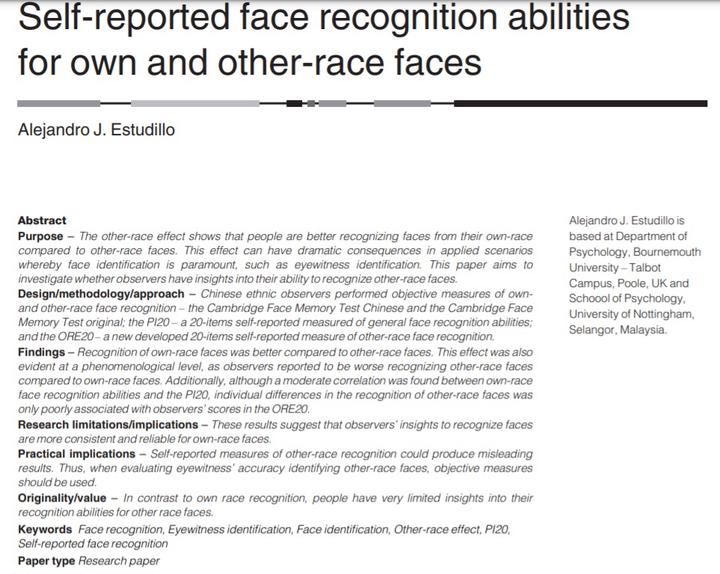
Abstract
The other-race effect shows that people are better recognizing faces from their own-race compared to other-race faces. This effect can have dramatic consequences in applied scenarios whereby face identification is paramount, such as eyewitness identification. This paper aims to investigate whether observers have insights into their ability to recognize other-race faces.,Chinese ethnic observers performed objective measures of own- and other-race face recognition – the Cambridge Face Memory Test Chinese and the Cambridge Face Memory Test original; the PI20 – a 20-items self-reported measured of general face recognition abilities; and the ORE20 – a new developed 20-items self-reported measure of other-race face recognition.,Recognition of own-race faces was better compared to other-race faces. This effect was also evident at a phenomenological level, as observers reported to be worse recognizing other-race faces compared to own-race faces. Additionally, although a moderate correlation was found between own-race face recognition abilities and the PI20, individual differences in the recognition of other-race faces was only poorly associated with observers' scores in the ORE20.,These results suggest that observers' insights to recognize faces are more consistent and reliable for own-race faces.,Self-reported measures of other-race recognition could produce misleading results. Thus, when evaluating eyewitness' accuracy identifying other-race faces, objective measures should be used.,In contrast to own race recognition, people have very limited insights into their recognition abilities for other race faces.